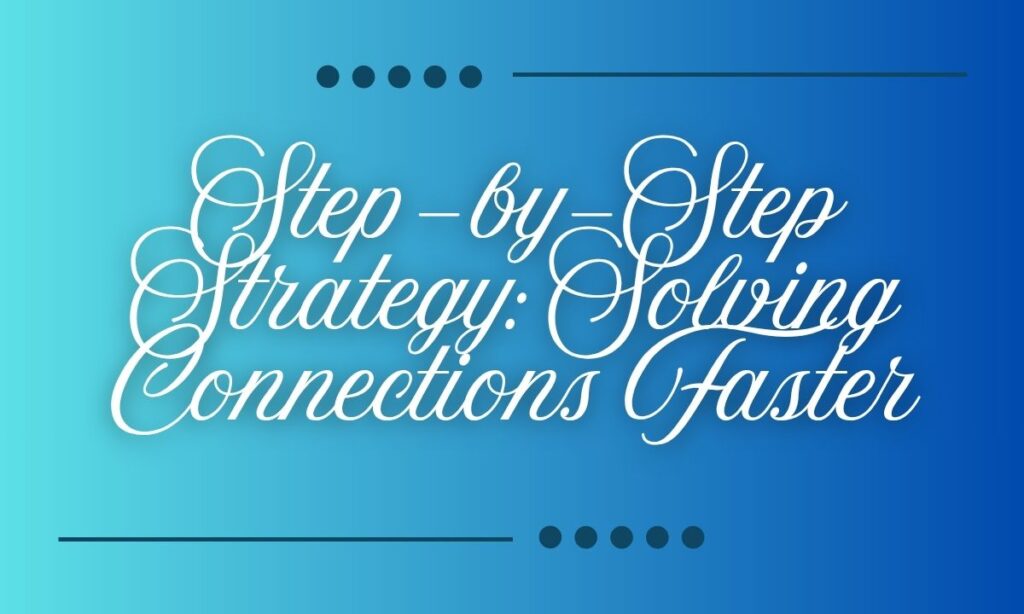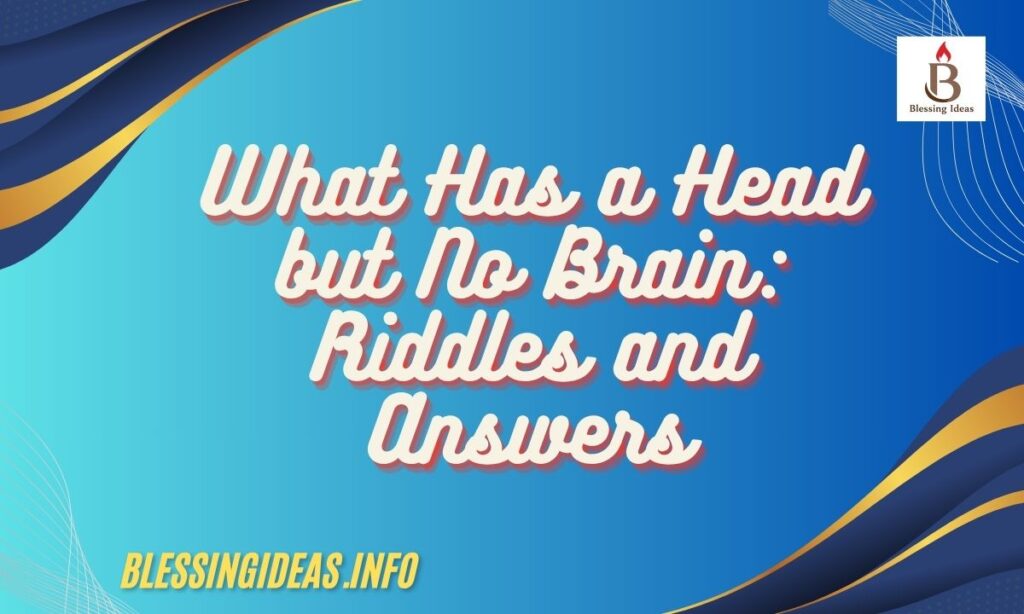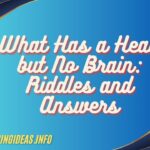The NYT Connections puzzle has become a daily ritual for millions of word game enthusiasts. Every day brings a fresh challenge with 16 words that need perfect grouping. Many players find themselves stuck halfway through the puzzle. That’s where Mashable Connections Hint Today comes to your rescue.
This puzzle tests your pattern recognition skills like no other game. You need sharp thinking and quick connections. Sometimes the words seem completely random. Other times they appear deceptively simple. The truth lies somewhere in between.
What Is Mashable Connections Hint?
Mashable Connections Hint is your daily puzzle companion. It launched alongside the puzzle’s rising popularity in 2023. The service provides expert guidance without stealing your victory.
Unlike other hint services, Mashable takes a thoughtful approach. They understand that different players need different levels of help. Beginners might need more obvious clues. Expert players prefer subtle nudges.
The Mashable team analyzes each puzzle before publishing hints. They identify where most players get stuck. They spot the tricky wordplay that causes confusion. Their expertise helps thousands maintain winning streaks.
The hints come in layers of increasing detail. You choose how much help feels right. This customization respects your skill level. It also keeps improving your solving abilities over time.
How the NYT Connections Puzzle Works
Understanding the game mechanics is your first step to mastery. The New York Times designed this puzzle to challenge your brain. Every element serves a purpose in creating difficulty.
Puzzle Format
The basic structure stays consistent every single day. You face exactly 16 words in a 4×4 grid. Your job is sorting them into four perfect groups. Each group must contain exactly four related words.
There’s no partial credit in this game. You either get the complete group or nothing. Wrong groupings trigger immediate penalties. Perfect accuracy is your only path forward.
The puzzle resets at midnight Eastern Time daily. Fresh challenges appear with varying difficulty. Some days feel easier than others. This variety keeps the game interesting long-term.
You can’t skip groups or save them for later. Every puzzle demands complete solutions. This all-or-nothing approach creates genuine tension. It also makes victories more satisfying.
Color-Coded Difficulty
The game uses four distinct colors to indicate difficulty. Understanding this system helps you strategize better. Each color represents a different challenge level.
| Color | Difficulty Level | Typical Examples |
| Yellow | Easiest | Days of the week, months |
| Green | Moderate | Types of birds, professions |
| Blue | Hard | Words with double meanings |
| Purple | Hardest | Obscure cultural references |
Yellow categories usually involve straightforward connections. Think about common things like colors or animals. Most players solve these quickly without much thought.
Green categories need slightly more mental effort. They might involve synonyms or related concepts. Professional knowledge sometimes helps here. But they’re still fairly accessible to most players.
Blue categories start testing your creativity. Wordplay becomes important at this level. Multiple meanings create confusion deliberately. Abstract thinking becomes essential for success.
Purple categories demand specialized knowledge. Pop culture references appear frequently here. Historical events and niche terminology create barriers. These groups often determine whether you win or lose.
Lives and Penalties
You start each puzzle with four mistakes allowed. Every wrong grouping costs you one precious life. Lose all four and the game ends immediately.
This limited-lives system creates real stakes. Random guessing becomes dangerous with such constraints. You need to think carefully before submitting answers.
The penalty system adds psychological pressure. Each guess carries real consequences. This tension makes successful solutions more rewarding. It also encourages strategic thinking over impulse.
Smart players verify their logic before clicking submit. They double-check their reasoning. They look for alternative explanations. This careful approach saves lives for harder groups.
Why It’s Challenging
Multiple word meanings create the primary difficulty. Consider the word “bass” as an example. It could mean a fish or a musical instrument. Context becomes your only guide.
Overlapping categories confuse even experienced players. One word might fit multiple themes perfectly. This ambiguity forces difficult choices. Elimination strategies help narrow possibilities.
Cultural knowledge gaps frustrate many solvers regularly. References to specific movies stump younger players. Historical events confuse those unfamiliar with them. Mashable hints bridge these knowledge gaps effectively.
The puzzle designers intentionally create these challenges. They want to test diverse thinking skills. They reward broad knowledge and creative connections. This design philosophy makes the game endlessly engaging.
The Role of Mashable Hints
Mashable hints serve a specific purpose in the puzzle ecosystem. They provide assistance without destroying the challenge. Professional hint crafting separates them from competitors.
Layered Approach
Progressive difficulty defines Mashable’s hint system perfectly. Level one provides gentle category suggestions only. Level two offers more specific guidance. Level three reveals near-complete solutions.
This graduated approach respects different skill levels. Beginners can access more help when needed. Experts stick to subtle nudges only. Everyone finds their comfort zone.
Customizable assistance lets you control the experience. You decide how much help feels appropriate. This flexibility maintains the puzzle’s challenge level. It also supports continuous skill development.
The layered system teaches pattern recognition gradually. You learn to spot connections yourself over time. Hints become training wheels that eventually come off. This educational approach builds lasting skills.
Hints vs. Spoilers
True hints preserve the solving experience completely. They guide your thinking without providing direct answers. Spoilers eliminate all challenge and satisfaction instantly.
Mashable carefully balances these two elements. Their hints spark “aha moments” rather than killing them. You still earn the victory through your insights. The satisfaction remains fully intact.
Professional writers craft each hint very deliberately. They understand which clues help versus hurt. They know when to be vague versus specific. This expertise shows in every daily hint.
The goal is enhancement, not replacement. Hints should make you think harder, not less. They should illuminate paths without walking them for you. This philosophy guides all Mashable content.
Why It Matters
Frustration prevention keeps players engaged long-term. Impossible puzzles drive people away permanently. Nobody enjoys constant failure without progress. Strategic hints maintain healthy challenge levels.
Learning acceleration occurs through guided practice. Hints teach pattern recognition skills gradually. Players become better solvers over time. The educational value extends beyond single puzzles.
Community building thrives around shared hint usage. Players discuss strategies in online forums. They compare approaches and debate solutions. This social element enhances the puzzle experience significantly.
Mental health considerations matter in game design. Excessive frustration damages wellbeing unnecessarily. Hints provide pressure relief when needed. This balance keeps puzzling fun rather than stressful.
Step-by-Step Strategy: Solving Connections Faster

Systematic approaches outperform random guessing consistently. Professional puzzlers follow specific sequences every time. These methods maximize success while minimizing mistakes.
Step 1: Scan the Grid
Initial scanning reveals obvious patterns immediately. Look for clear categories like colors or animals. These easy groups provide starting momentum you’ll need later.
Mental cataloging helps organize potential connections early. Group similar words in your mind first. This preparation prevents hasty mistakes later on. It also primes your brain for pattern recognition.
Spend two full minutes just observing before guessing. Rushing always leads to preventable errors. Patient analysis pays dividends consistently. Your eyes might spot connections your conscious mind missed.
Look for unusual words that stand out. These often belong to purple categories. Identifying them early helps with elimination later. This strategic awareness improves your overall approach.
Step 2: Tackle the Easy Ones
Yellow categories should always be your first targets. These straightforward groups build confidence quickly. Early success creates positive momentum for harder groups ahead.
Obvious patterns rarely trick experienced players. Trust your instincts on clear connections. Save overthinking for genuinely difficult categories. Simple answers are often correct answers.
Confidence building through early wins matters psychologically. Success breeds more success in puzzle solving. Starting strong helps you finish strong. This momentum effect is real and powerful.
Completing easy groups also clarifies the remaining words. Elimination becomes easier with fewer options. The puzzle gets simpler as you progress. This snowball effect rewards strategic sequencing.
Step 3: Test Groupings Logically
Three-word verification prevents most mistakes effectively. If three words clearly connect, find the fourth. This logical approach saves precious lives consistently.
Elimination strategies narrow down possibilities effectively. Remove confirmed groups from consideration completely. Focus remaining attention on unused words only. This mental discipline prevents confusion.
Pattern consistency should guide all your decisions. Ensure all four words follow the same rule. Mixed patterns usually indicate wrong groupings. Uniformity signals correct connections.
Double-check your logic before submitting anything. Ask yourself why these four words connect. State the connection rule clearly mentally. If it sounds forced, reconsider your choice.
Step 4: Use Mashable Hints Strategically
Timing matters when accessing hints significantly. Use them when genuinely stuck, not immediately. This preserves the challenge and satisfaction levels. It also maximizes learning from each puzzle.
Progressive help works better than jumping to answers. Start with gentle nudges before seeking complete guidance. This maintains skill development over time. It also keeps the game engaging.
Learning focus should guide all hint usage. Use hints to understand patterns, not just solve today. This investment pays long-term dividends. You become better at all future puzzles.
Don’t feel guilty about using hints when needed. They’re tools designed to enhance your experience. Smart players leverage all available resources. Success matters more than arbitrary rules.
Step 5: Leave the Hardest for Last
Purple categories require the most mental energy. Save this effort for when you’re focused. Fresh thinking handles complexity better always. Tired minds make more mistakes.
The process of elimination works powerfully with fewer words. Limited options make even obscure connections visible. Patience rewards persistence at this stage. Don’t rush the final group.
Cultural knowledge gaps become manageable with specialized hints. Mashable understands which references stump most players. Their targeted help bridges these knowledge gaps. You learn new things while solving.
Sometimes the last group solves itself automatically. When three groups are confirmed, the fourth becomes obvious. This mathematical certainty provides reassurance. Trust the process when it reaches this point.
Advanced Tactics for Experienced Players
Expert-level strategies separate good players from great ones. These techniques require practice but deliver consistent results. Master these methods for puzzle dominance.
Recognizing Linguistic Tricks
Wordplay patterns appear in roughly 60% of puzzles. Common tricks include homophones and double meanings. Pattern recognition accelerates with regular practice.
Multiple definitions create the most confusion deliberately. “Bark” could mean dog sound or tree covering. Context from other group words helps clarify meanings.
Prefix and suffix patterns occur frequently in blue categories. Words ending in “-ing” often group together. Words starting with “re-” might form connections. These structural similarities provide valuable clues.
| Linguistic Trick | Example Words | Category Theme |
| Homophones | Two, Too, To | Sounds like “TWO” |
| Double Meanings | Bark, Bow, Bass | Multiple definitions |
| Word Parts | Refresh, Remake, Rewind | Words starting with “RE” |
Abstract vs. Literal Themes
Literal connections follow obvious logical patterns. Animals, colors, and professions represent common themes. These groups usually appear in easier difficulties.
Abstract connections require creative thinking instead. “Things that rise” could include bread and emotions. Metaphorical thinking becomes essential here. Surface meanings often mislead.
Conceptual flexibility separates advanced players from beginners. Great solvers think beyond surface-level meanings. They consider emotional, temporal, and situational connections. This broader perspective unlocks difficult puzzles.
Practice trains your brain to think abstractly. Start questioning obvious interpretations always. Ask what else words could represent. This mental flexibility improves gradually with time.
Handling Ambiguity
Word versatility creates puzzle complexity deliberately. Many words fit multiple potential categories perfectly. Smart players use elimination to resolve conflicts.
Context clues from confirmed groups help clarify ambiguous words. If three words clearly connect, the fourth becomes clearer. This logical deduction prevents costly mistakes.
Strategic patience pays off with ambiguous groupings. Don’t force connections that feel uncertain. Wait for clearer patterns to emerge first. Hasty decisions waste precious lives.
Sometimes you must make educated guesses eventually. Calculate which grouping seems most likely. Consider the difficult colors as hints. Trust your instincts when logic runs out.
Case Study: A Past Puzzle
Consider this real example from last month. The words were: Mercury, Venus, Mars, Jupiter, Dog, Cat, Horse, Cow, Red, Blue, Green, Yellow, Drum, Guitar, Flute, Piano.
The solution groups were straightforward this time:
- Yellow: Mercury, Venus, Mars, Jupiter (Planets)
- Green: Dog, Cat, Horse, Cow (Animals)
- Blue: Red, Blue, Green, Yellow (Colors)
- Purple: Drum, Guitar, Flute, Piano (Instruments)
But imagine if “Bass” replaced “Piano” here. Now it could fit with fish OR instruments. This ambiguity demonstrates real puzzle complexity perfectly.
Pattern recognition would identify three clear instruments first. Then “Bass” becomes obviously the fourth through elimination. This logical approach prevents confusion. It shows how systematic thinking solves ambiguity.
Common Pitfalls and How to Avoid Them
Mistake patterns repeat across millions of players. Learning these common errors prevents unnecessary failures. Smart players study failure modes deliberately.
Tunnel Vision
Single-minded focus blinds players to better possibilities. Getting locked onto one interpretation prevents flexible thinking. This rigidity kills puzzle success quickly.
Mental breaks help reset perspective when stuck. Step away for thirty seconds minimum. Fresh eyes often spot overlooked patterns immediately. Distance provides clarity.
Multiple hypotheses should guide your thinking always. Consider several possible groupings simultaneously. This approach prevents premature commitment to wrong paths. Flexibility beats rigidity consistently.
Question your assumptions regularly throughout solving. Ask what else words could mean. Challenge your initial interpretations actively. This self-skepticism improves accuracy.
Overvaluing Exact Matches
Perfect similarities don’t always define categories. Abstract themes often connect seemingly unrelated words. Flexibility beats rigidity in puzzle solving.
Thematic thinking opens more possibilities than literal matching. Consider emotional connections and metaphorical relationships. These abstract links often define purple categories.
Creative interpretation becomes crucial for advanced puzzles. Think beyond obvious word meanings always. Consider cultural contexts and historical connections. Wordplay possibilities expand your options.
Sometimes the connection feels loose at first. That’s okay in abstract categories especially. Trust that the puzzle has internal logic. The connection exists even if it is subtle.
Misreading Difficulty Colors
Color assumptions mislead many players regularly. Purple doesn’t automatically mean impossible ever. Sometimes it just indicates specialized knowledge requirements.
Effort distribution should match actual difficulty, not colors. Some yellow categories trick experienced players occasionally. Some purple groups reveal themselves quickly. Judge each group independently.
Balanced approach prevents color bias from affecting judgment. Evaluate difficulty based on your understanding. Let the actual challenge guide your effort allocation. Colors are guides, not rules.
Don’t save all purple groups for absolute last. Sometimes they’re easier than blue categories. Assess each group on its own merits. Flexibility improves success rates significantly.
Ignoring Subtle Themes
Pop culture references stump players lacking specific knowledge. Movie titles and song lyrics create common blind spots. Mashable hints excel at bridging these gaps.
Generational differences affect puzzle accessibility significantly. References to 1980s movies confuse younger players. Modern slang puzzles older solvers regularly. Hints level this playing field effectively.
Specialized knowledge shouldn’t determine puzzle success alone. Great hint systems make cultural references accessible. This inclusivity improves the overall game experience. Everyone deserves equal chances.
Historical awareness helps with many purple categories. Reading broadly expands your cultural knowledge base. This investment pays off across many puzzles. Learning never stops benefiting you.
Benefits of Using Mashable’s Connections Hints
Strategic hint usage transforms puzzle solving from frustrating to enjoyable. Professional guidance accelerates skill development significantly. Smart players embrace all available resources.
Pattern recognition improvement occurs through guided practice. Hints teach you what to look for. This educational component creates lasting skill gains. You become better naturally over time.
Stress reduction keeps puzzling fun rather than overwhelming. Nobody enjoys constant failure without progress. Strategic assistance maintains healthy challenge levels. Fun should always be the priority.
Learning acceleration happens faster with expert guidance. Professional hint crafters understand common stumbling blocks. Their insights shortcut your learning curve. You advance weeks faster with help.
Community participation becomes possible for all levels. Hints create equal access to puzzle discussions. This inclusivity strengthens the entire player community. Everyone can contribute meaningfully.
| Benefit Category | Specific Advantage | Long-term Impact |
| Skill Building | Pattern recognition training | Improved solving speed |
| Enjoyment | Frustration reduction | Sustained engagement |
| Learning | Expert insight access | Accelerated improvement |
| Social | Community participation | Enhanced discussions |
| Mental Health | Stress management | Healthier gaming habits |
Community and Social Aspect
Puzzle communities thrive around shared challenges and solutions. Reddit’s r/ConnectionsNYT hosts daily discussions actively. Players debate tricky categories and share strategies.
Social media engagement explodes around difficult puzzles. Twitter users post screenshot victories regularly. Instagram stories feature solving celebrations. This social sharing adds competitive elements.
Friendly competition develops between puzzle partners naturally. Couples compare daily scores each morning. Friend groups maintain solving streaks together. Mashable hints level competitive playing fields.
Educational discussions emerge from hint usage frequently. Players learn new cultural references daily. Vocabulary expands through puzzle exposure consistently. This intellectual growth provides lasting benefits.
Inclusive participation results from strategic hint availability. Players with knowledge gaps can still contribute. Cultural barriers diminish with proper guidance. Everyone can enjoy puzzle communities fully.
Frequently Asked Questions
Are Mashable hints available every day?
Yes, Mashable publishes daily hints for every NYT Connections puzzle without fail.
Do hints cost money to access?
Most Mashable hints are free, though some advanced features may require subscriptions.
Can I use hints after making mistakes?
Absolutely, hints work at any point during puzzle solving, even after mistakes.
Will using hints make me worse at puzzles?
No, strategic hint usage actually improves skills through guided learning over time.
How quickly are hints published each day?
Mashable typically publishes hints within hours of puzzle release each morning.
Do hints work for older puzzles?
Yes, Mashable maintains hint archives for past puzzles you can access anytime.
Can I request hints for specific categories?
Mashable provides general hints but not category-specific requests for individual players.
Are hints available in languages other than English?
Currently, Mashable hints focus primarily on English-language puzzles only.
Do professional puzzlers use hints?
Many experts use hints strategically for learning and time management purposes.
How accurate are Mashable’s hints?
Mashable maintains very high accuracy through expert puzzle analysis and quality control.
Conclusion
Mastering NYT Connections requires strategy, patience, and smart resource usage. Mashable Connections Hint Today provides the perfect balance of challenge and assistance. Professional guidance accelerates your puzzle journey significantly without stealing your victories.
The key to success lies in systematic approaches rather than random guessing. Scan for patterns first before making any moves. Tackle easy categories early to build momentum. Use logical verification before submitting any grouping. Save difficult groups for last when fewer options remain.






